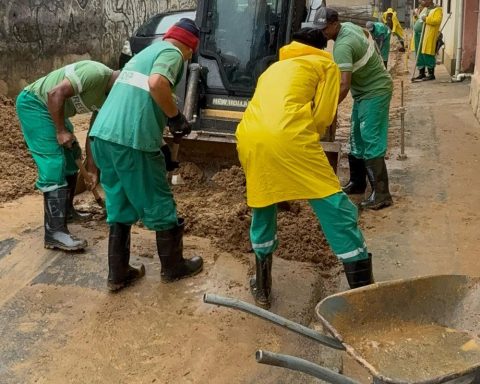A survey by the State Department of Health (SES-RJ) points out that the coverage of all vaccines has been reduced in the state. Immunization against poliomyelitis dropped from 88.76% in 2017 to 87.48% in 2018 and 73.62% in 2019. And in 2020, the year in which the pandemic hampered going to vaccination sites, only 55 .2% of babies were immunized. This Monday (24), inclusive, will be celebrated the World Day to Combat Poliomyelitis. 

The secretariat makes an appeal to the population so that children and adolescents under 15 years old, take advantage of the final stretch of the national Multivaccination campaign for mass immunization. The following protection steps expose an even more worrisome reality. In 2017, 77.20% of children between 13 and 24 months attended the posts to take the booster dose. In 2018, the index dropped to 67.53% of babies and, in 2019, 60.18%, and in 2020, 45.83%. Family attendance for the four-year dose has also been falling: 65.59% in 2017, 59.07% in 2018, 53.83% in 2019, and 49.58% in 2020.
Until the end of this month, children and adolescents under the age of 15 can be vaccinated. Among the vaccines that are available at the posts in the campaign are: BCG, Hepatitis A and B, Penta (DTP/Hib/Hep B), Pneumococcal 10 valent, VIP (Inactivated Poliomyelitis Vaccine), HRV (Human Rotavirus Vaccine), Meningococcal C ( conjugated), OPV (Oral Poliomyelitis Vaccine), Yellow Fever, MMR (measles, rubella, mumps), DTP (triple bacterial), Chickenpox and quadrivalent HPV (Human Papillomavirus), dTpa (for pregnant adolescents), Meningococcal ACWY (conjugated) and dT (diphtheria and tetanus).
The National Immunization Program (PNI) provided the eradication of diseases that profoundly marked the history of humanity. By investing in vaccine quality control, application techniques and epidemiological surveillance strategies, Brazil managed to eradicate poliomyelitis in 1990. According to data from the Ministry of Health, in Brazil, the last case of wild poliovirus infection occurred in 1989, in city of Souza, in Paraíba. Also called infantile paralysis, polio is an acute contagious disease caused by the poliovirus, which can infect adults and children through contact with feces or secretions passed through the mouth of sick people. In severe cases, muscle paralysis occurs, with the lower limbs being more affected.
In Brazil, there has been no circulation of wild poliovirus since 1990. But the disease remains endemic in three countries: Afghanistan, Nigeria and Pakistan. Therefore, the importance of maintaining attention to the population’s personal and group immunity, with effective disease surveillance attention.













